LIFE APEX Project (LIFE17 ENV/SK/000355)
The AIM of LIFE APEX is to improve the systematic use of chemical monitoring data from apex predators and prey for protecting human health and the environment.
The OBJECTIVES of LIFE APEX are:
1.To demonstrate four novel, regulatory applications of chemical monitoring data from apex predators and prey.
2.To support and sustain regulatory take-up of these applications.
3.To replicate and transfer LIFE APEX approaches and methods with partners across the Europe.
4.To disseminate and communicate the LIFE APEX approaches and methods and in particular optimize uptake by regulators and industry.
Project Coordinator: Dr. Slobodnik Jaroslav (Environmental Institute)
Project Duration: September 2018 – August 2022
Project budget: € 3.35M (EU LIFE funding 60%)
website: https://lifeapex.eu/
twitter: @LIFEAPEX1
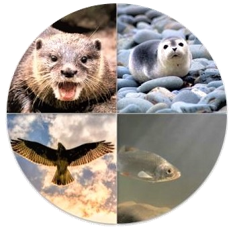
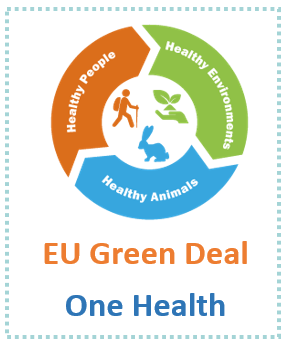

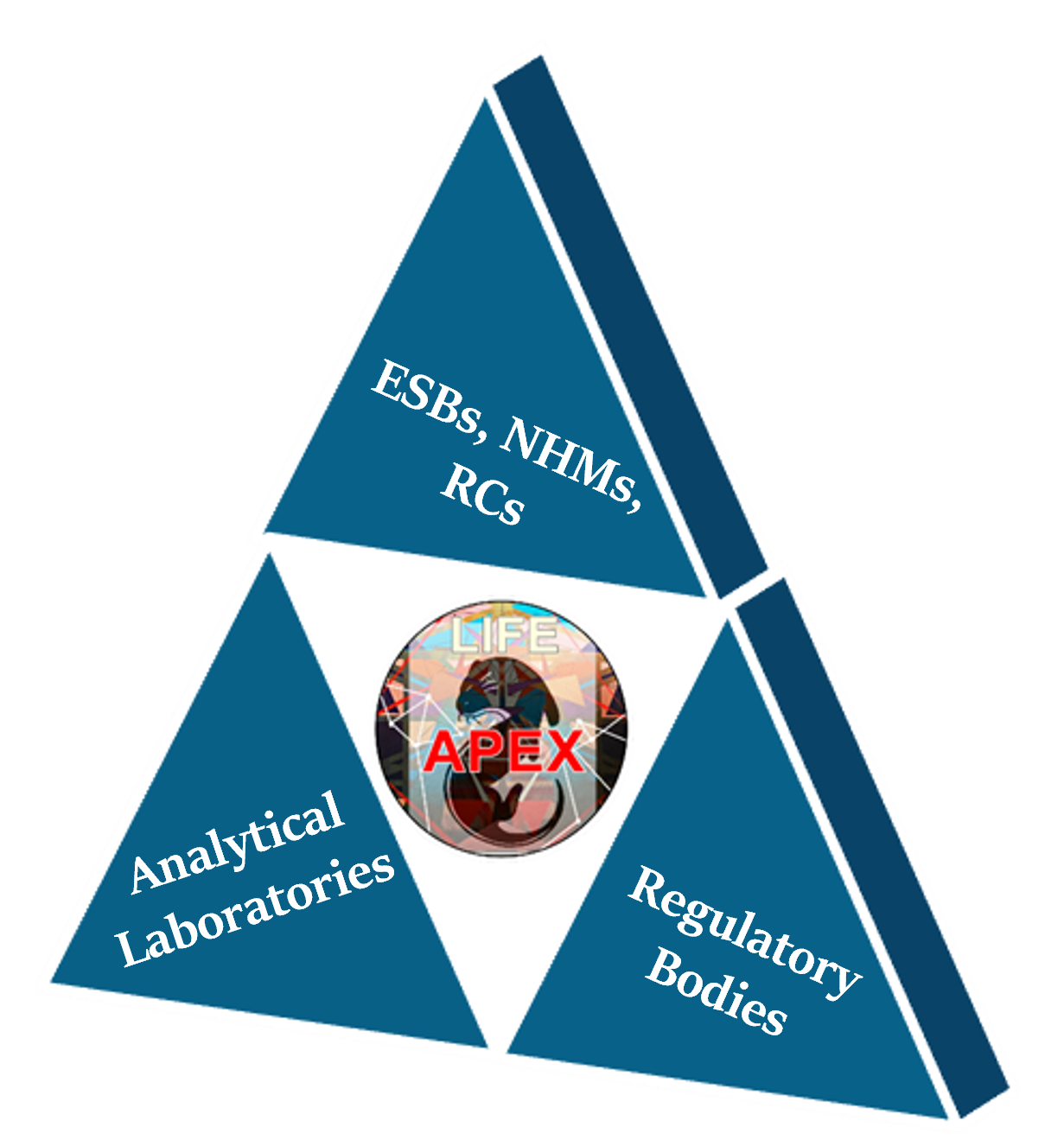
LIFE APEX project brings together providers of specimens [Environmental Specimen Banks –ESBs-, Natural History Museums –NHMs- and other scientific collections], regulators and analytical laboratories for the provision and analysis of apex predators and prey samples for chemical monitoring regulatory applications
The role of NKUA
Collection, pre-treatment and distribution of samples among involved analytical laboratories
Target analysis of 56 Per- and Polyfluoroalkyl Substances (PFAS) by LC-MS/MS
Wide-scope target analysis of >2,400 emerging contaminants by LC-ESI- and GC-APCI- QToFMS
Three-tiered approach
Tier 1: Wide-scope screening: Occurrence of emerging contaminants in apex predators and prey samples.
Tier 2: Time trend analyses: Fine-tuned analyses for top target and non-target substances in time series (specimens of Apex Predators and Prey from 1996-2019).
Tier 3: Replication with R&T partners: Samples from different European countries (wider European picture of occurrence of contaminants in AP&P).


Life Apex
Samples


Collection, pre-treatment and distribution of samples


Extraction and Instrumental analysis for the
determination of emerging contaminants

OVERALL RESULTS
250 emerging contaminants were detected in LIFE APEX samples through wide-scope target screening analysis
97 at least in two LIFE APEX Tiers

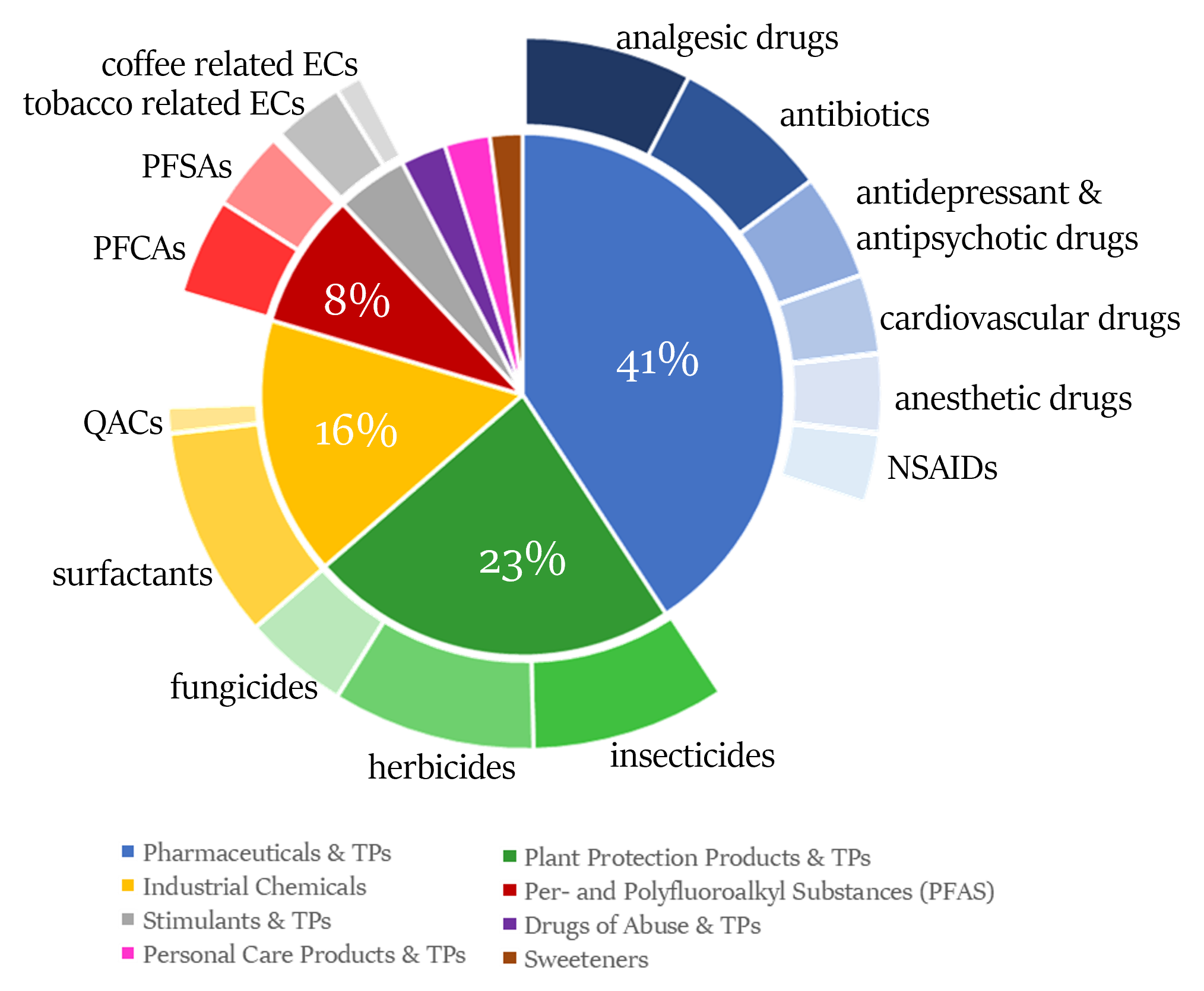
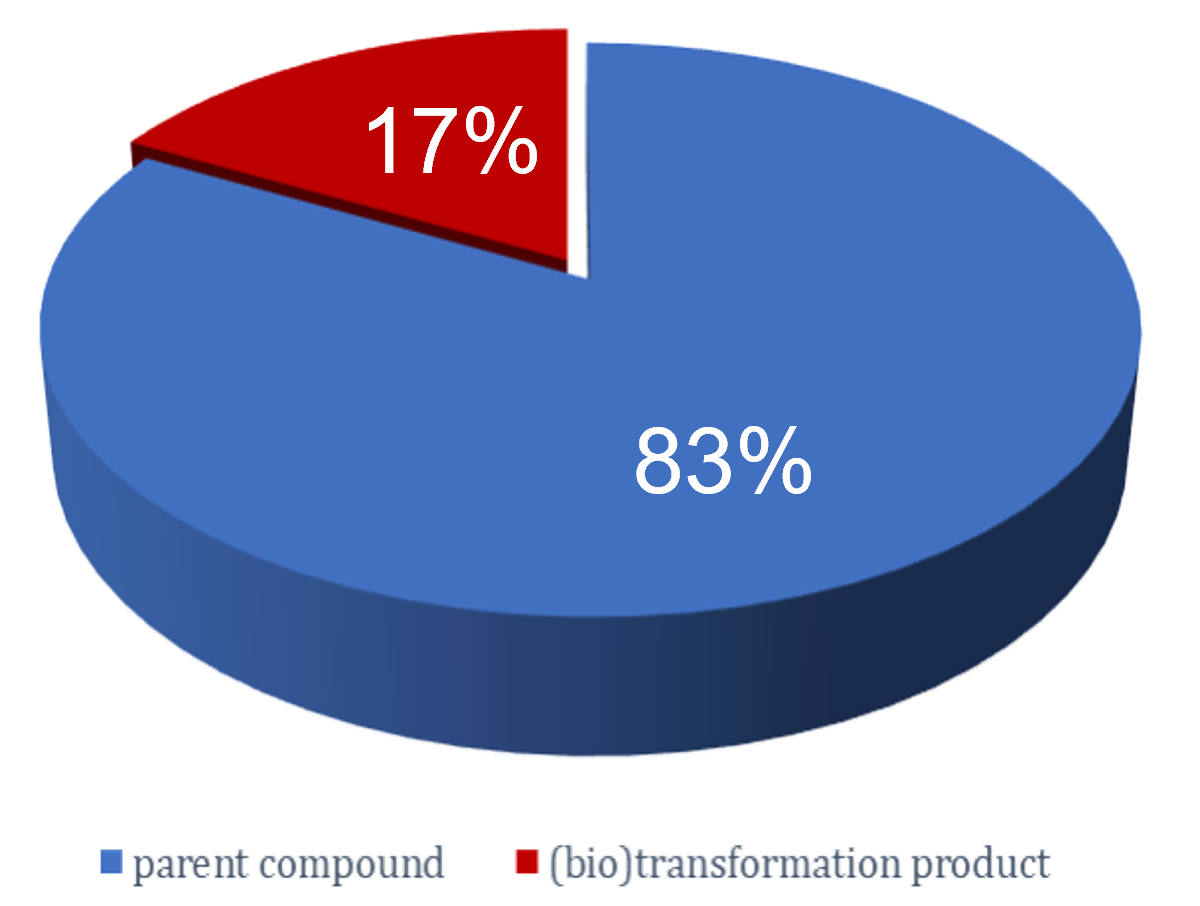

Detection of parent compounds & (bio)transformation products
-
46 (bio)TPs
-
Should be included in environmental monitoring
-
Risk assessment of parent compound/TPs

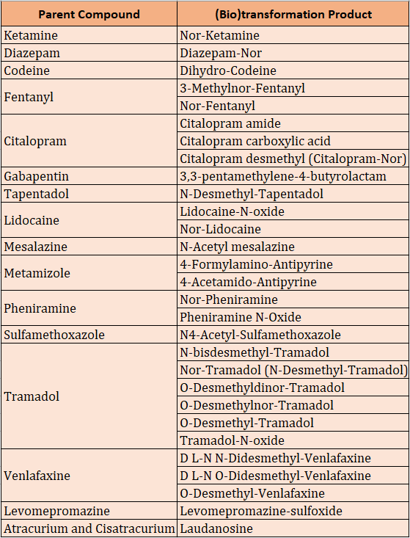
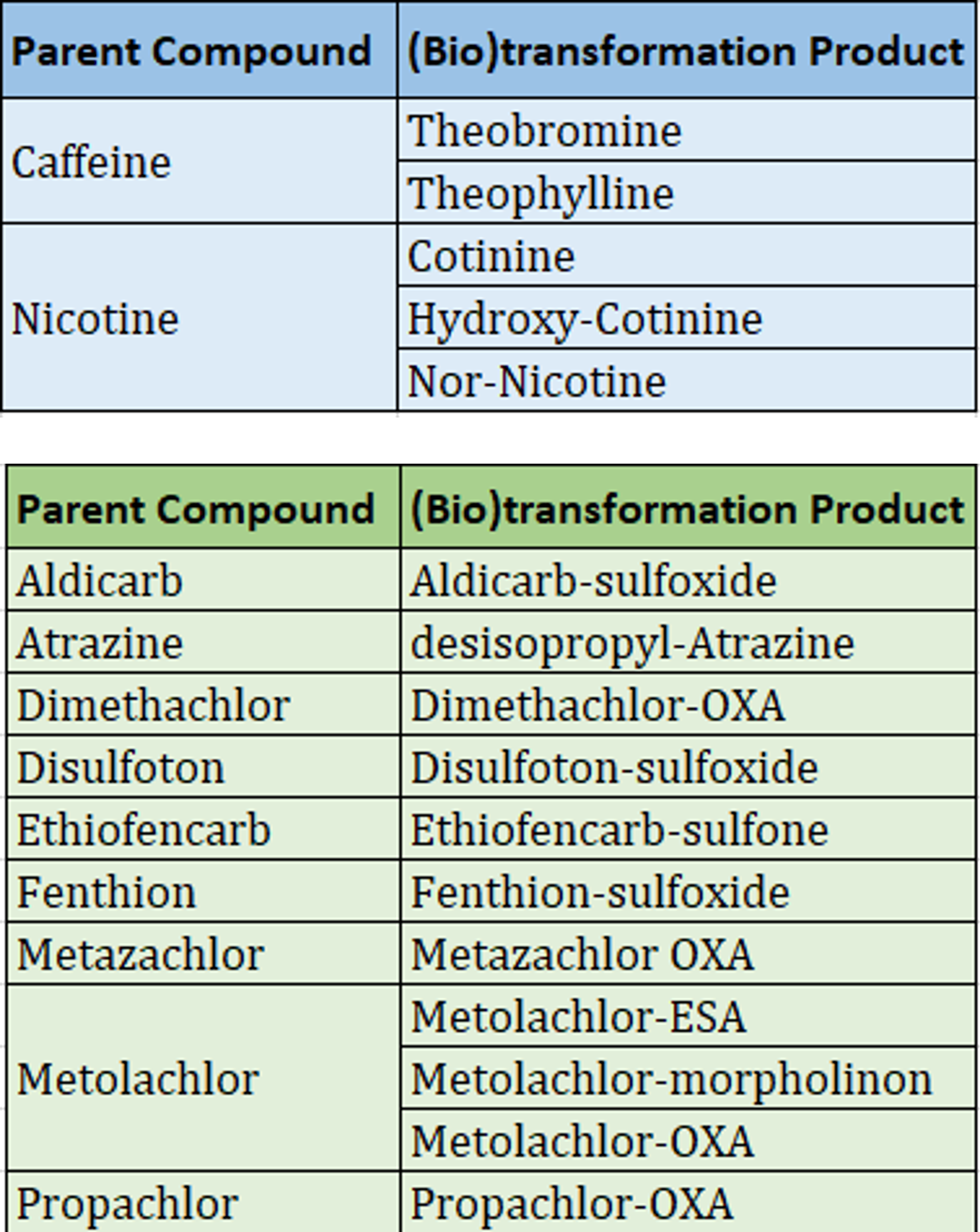


Evidence of potential biomagnification phenomena
-
19 PFAS
-
PFOS à highest concentration levels & %FoA
-
Highest Concentration (16.7 mg/Kg) à PFOS (Otter, NL)
-
Detection of PFAS branched isomers à PFOS & PFHxS
-
Conc. (marine specimens) < Conc. (freshwater specimens)
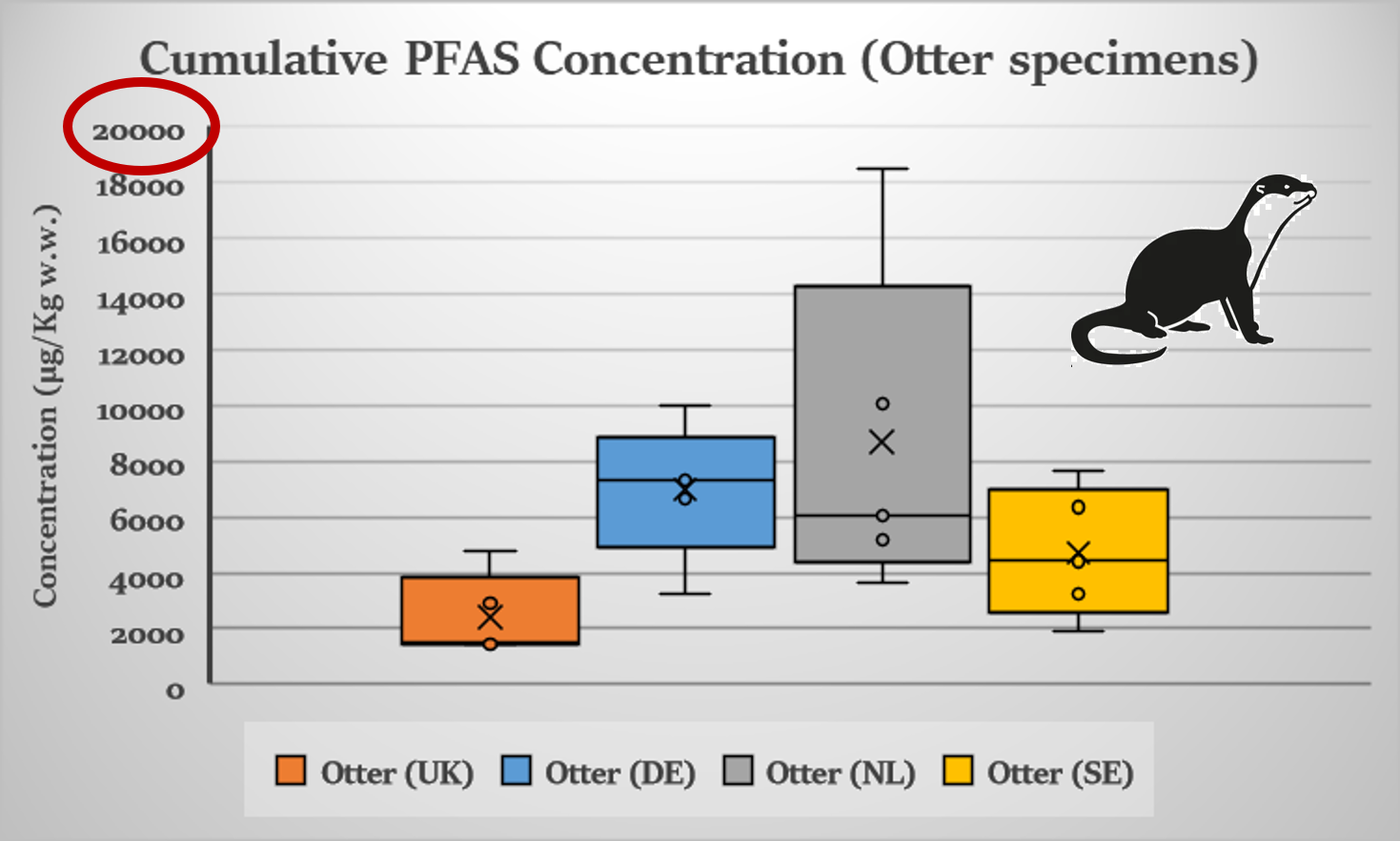
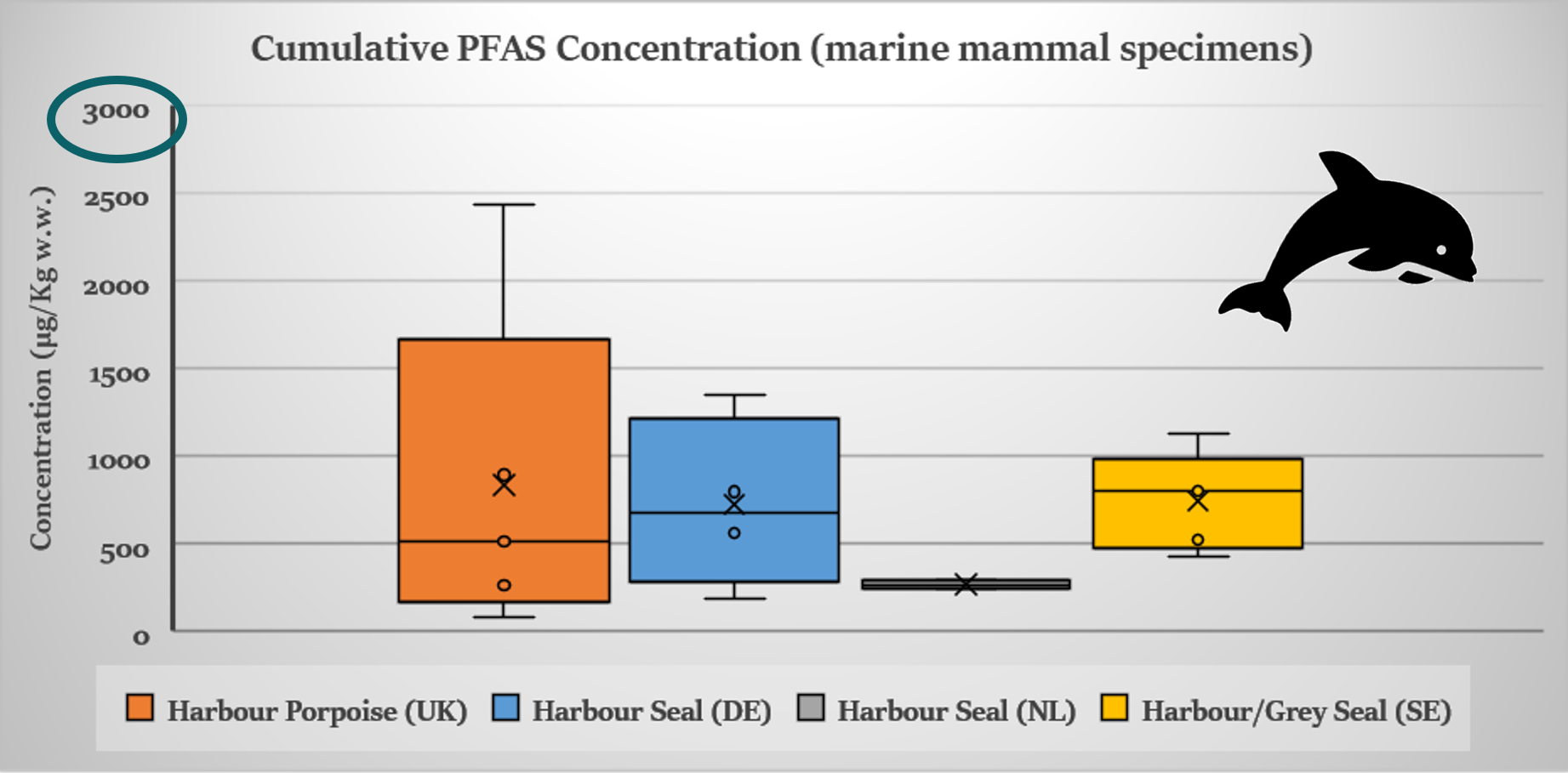
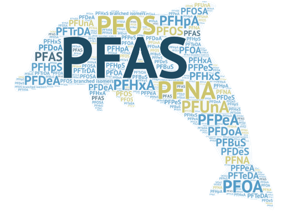
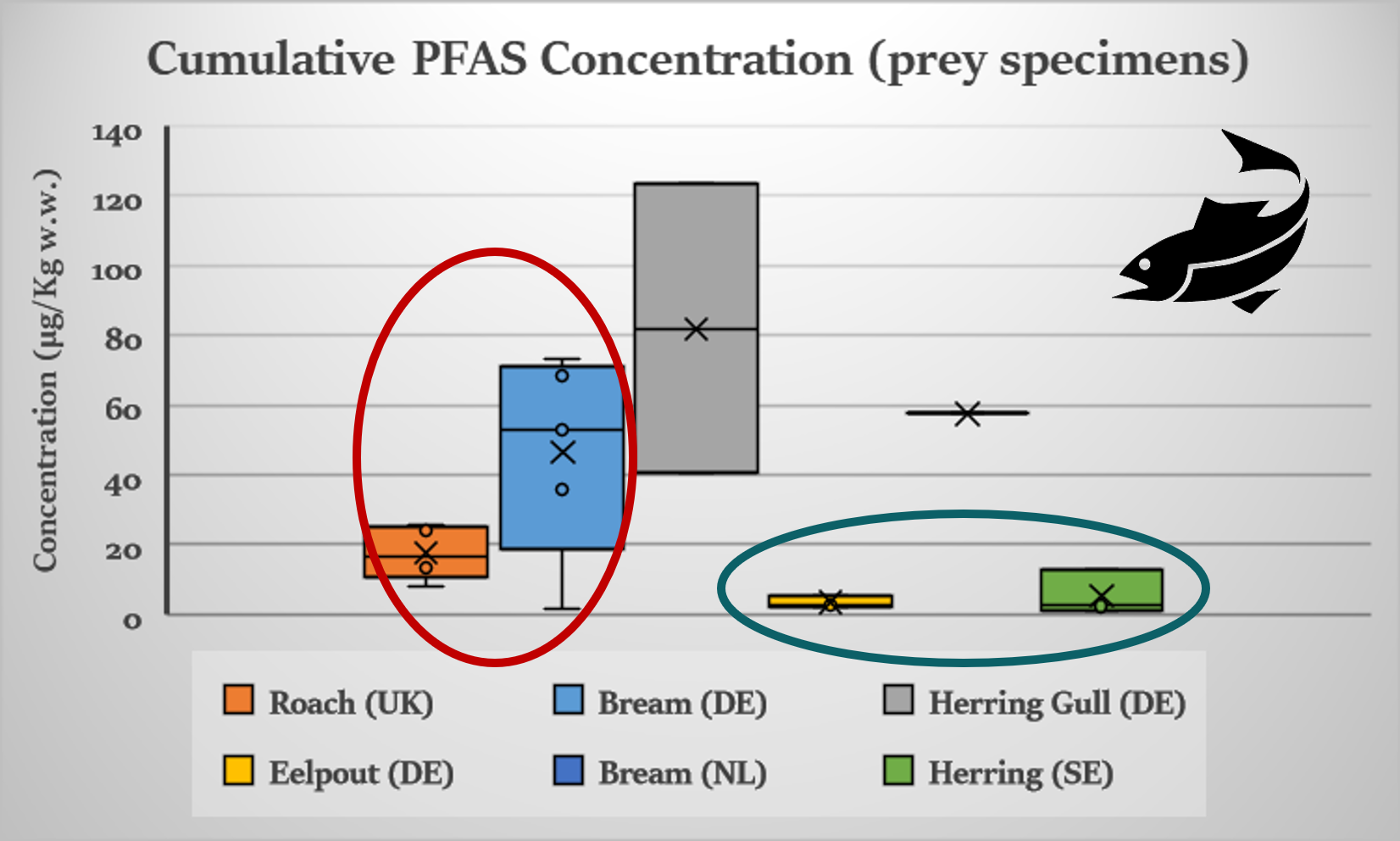
Tier 2: time-trend analysis results
The case of Perfluorooctanesulfonic acid (PFOS)
2010 --> 2018 - trend to lower concentrations of PFOS
Attributed to PFOS & PFOA replacement compounds (GenX, ADONA)?
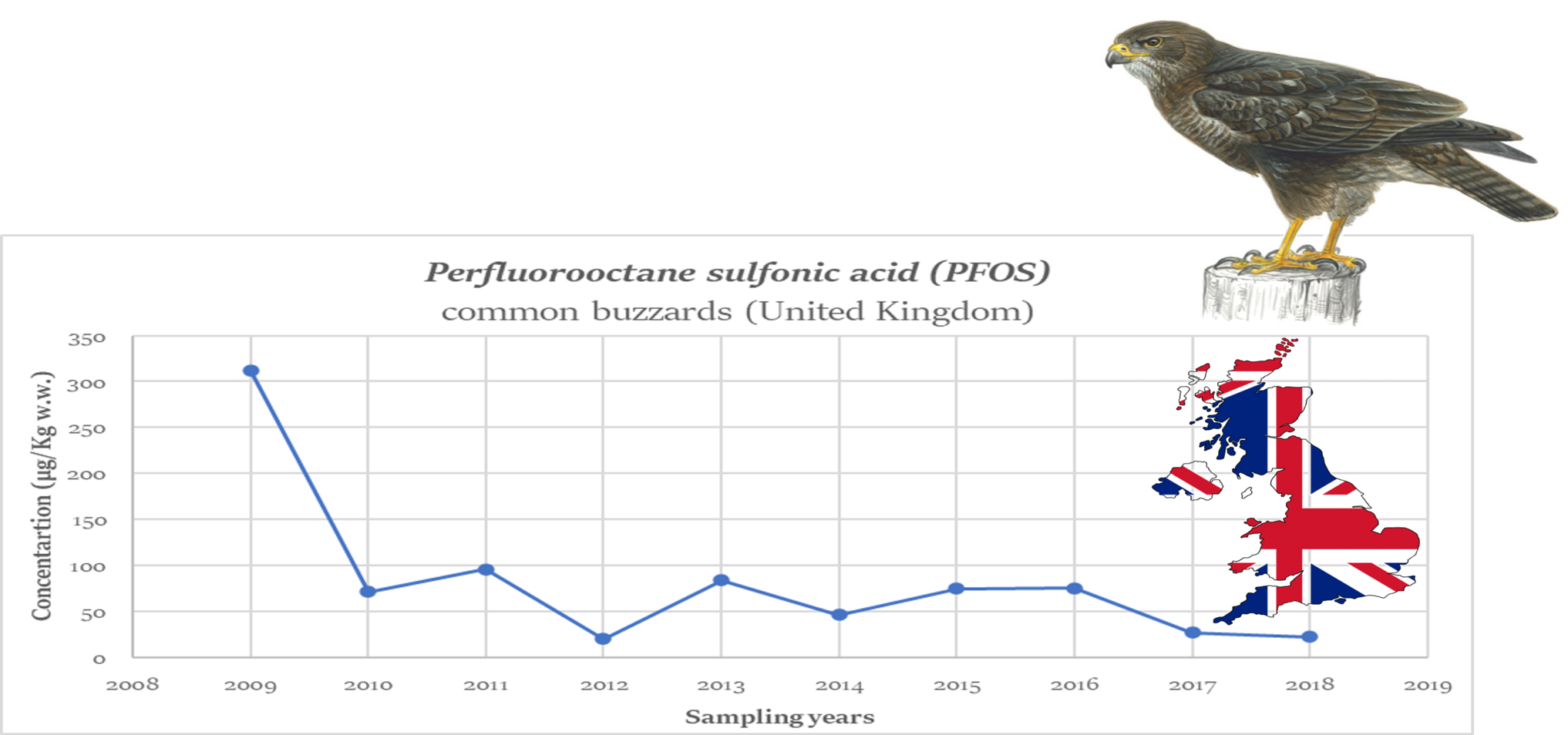
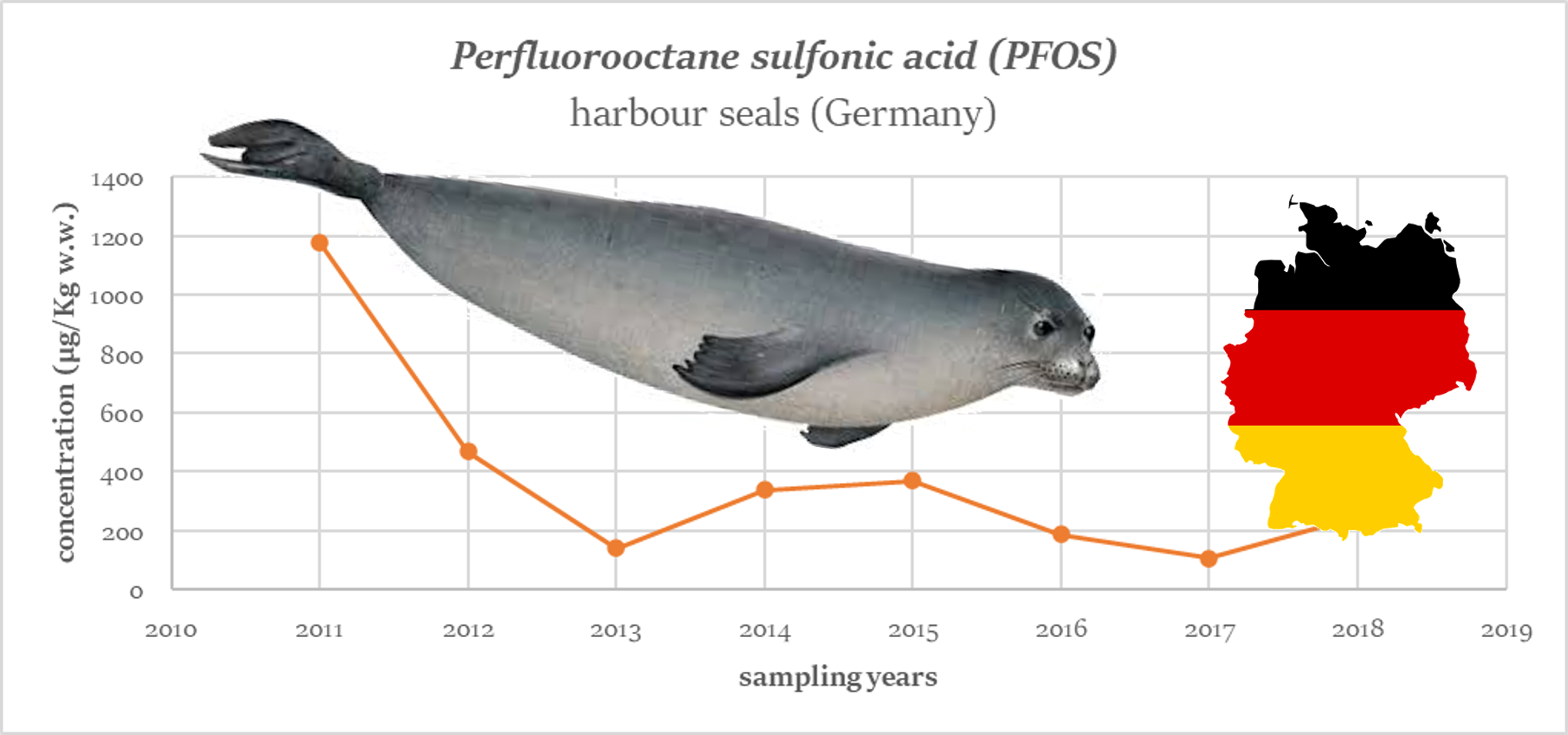
Tier 3: European picture of PFAS in otters
-
PFAS European distribution in otters
-
UK -> significant higher PFAS contamination
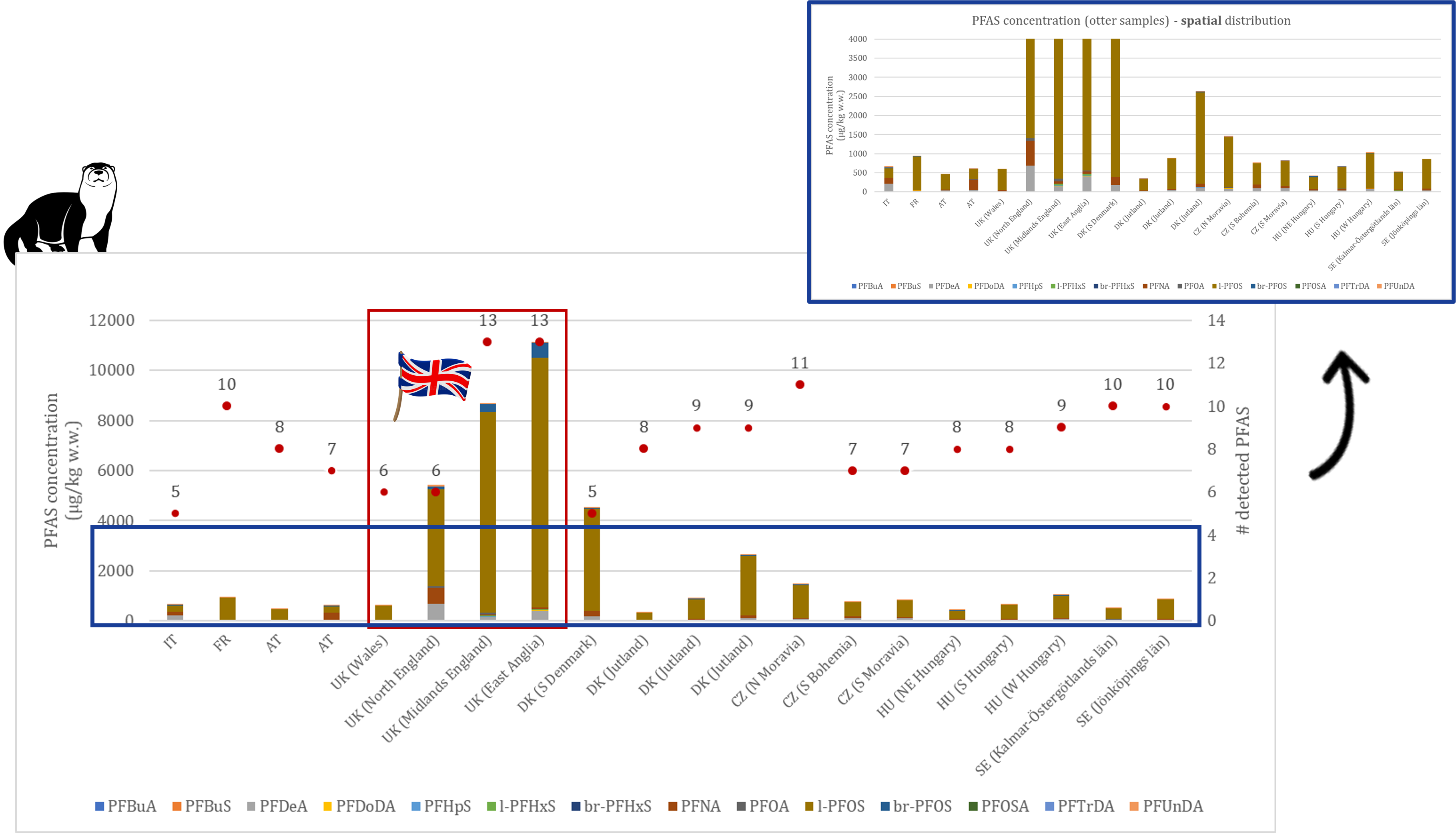
LIFE APEX achievements
-
First pan-European study making use of existing AP&P samples
-
Monitoring data on thousands of emerging contaminants using advanced analytical techniques
-
Archived HRMS data available for retrospective screening of any new compound of interest
-
Archived HRMS data available for retrospective screening of any new compound of interest
-
Prioritization & Risk Assessment of the detected emerging contaminants. Detection of predominant mixtures

LIFE APEX publications
- Gkotsis et al., “Assessment of contaminants of emerging concern in European apex predators and their prey by LC-QToF MS wide-scope target analysis”, Environment International, 2022, 170, 107623 (https://doi.org/10.1016/j.envint.2022.107623).
- Badry et al., ”Making use of apex predator sample collections: an integrated workflow for quality assured sample processing, analysis and digital sample freezing of archived samples”, Chemosphere, 2022, 309, 136603 (https://doi.org/10.1016/j.chemosphere.2022.136603).
- Movalli et al., “The role of natural science collections in the biomonitoring of environmental contaminants in apex predators in support of the EU’s zero pollution ambition”, Environmental Sciences Europe, 2022, 34, 88 (https:/doi.org/10.1186/s12302-022-00670-8).
- Badry et al., “Using environmental monitoring data from apex predators for chemicals management: towards harmonised sampling and processing of archived wildlife samples to increase the regulatory uptake of monitoring data in chemicals management”, Environmental Sciences Europe, 2022, 34, 81 (https://doi.org/10.1186/s12302-022-00664-6).
- Treu et al., “Using environmental monitoring data from apex predators for chemicals management: towards better use of monitoring data from apex predators in support of prioritisation and risk assessment of chemicals in Europe”, Environmental Sciences Europe, 2022, 34, 82 (https://doi.org/10.1186/s12302-022-00664-6).
- Androulakakis et al., “Determination of 56 per- and polyfluoroalkyl substances in top predators and their prey from Northern Europe by LC-MS/MS”, Chemosphere, 2022, 287, 131775. (https://doi.org/10.1016/j.chemosphere.2021.131775).
- Movalli et al., “Progress on bringing together raptor collections in Europe for contaminant research and monitoring in relation to chemicals regulation” Environmental Science and Pollution Research, Trend Editorial, 2019, (https://doi.org/10.1007/s11356-019-05340-6).
After LIFE APEX plan
LIFE APEX approaches have already been taken up, for example, under the OSPAR and HELCOM conventions, to deliver data on contaminants in (apex) biota species in the north-east Atlantic and the Baltic Sea.
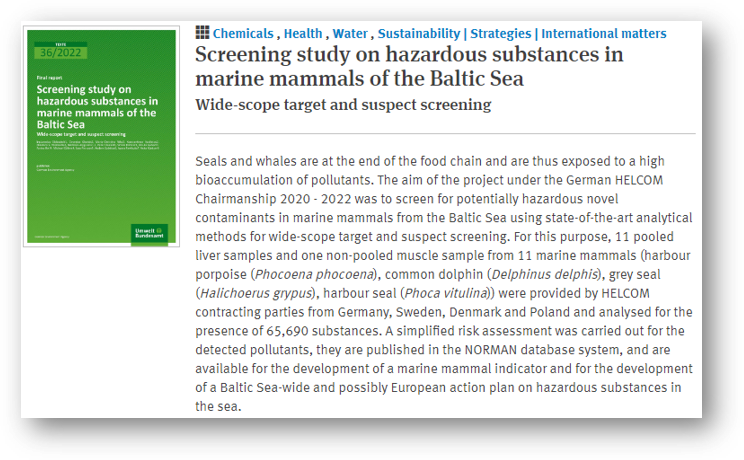
https://www.umweltbundesamt.de/en/publikationen/screening-study-on-hazardous-substances-in-marine
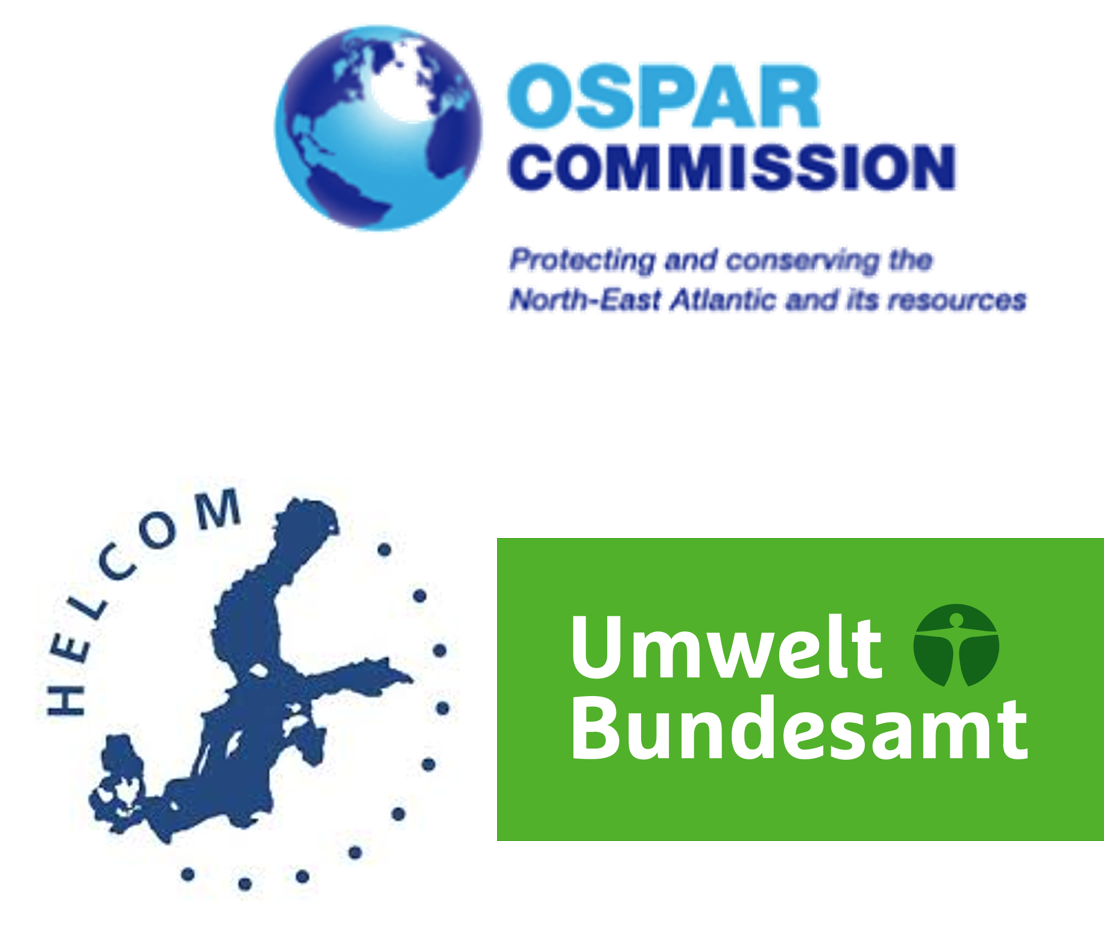
Collaborations following LIFE APEX approaches
Collaborations with research institutes & NHMs on emerging contaminants in top predator species
30 livers of white-tailed sea eagles
26 eggs of Peregrine falcon, Eurasian curlew, Little and Eagle owl
11 livers of black-tailed godwit
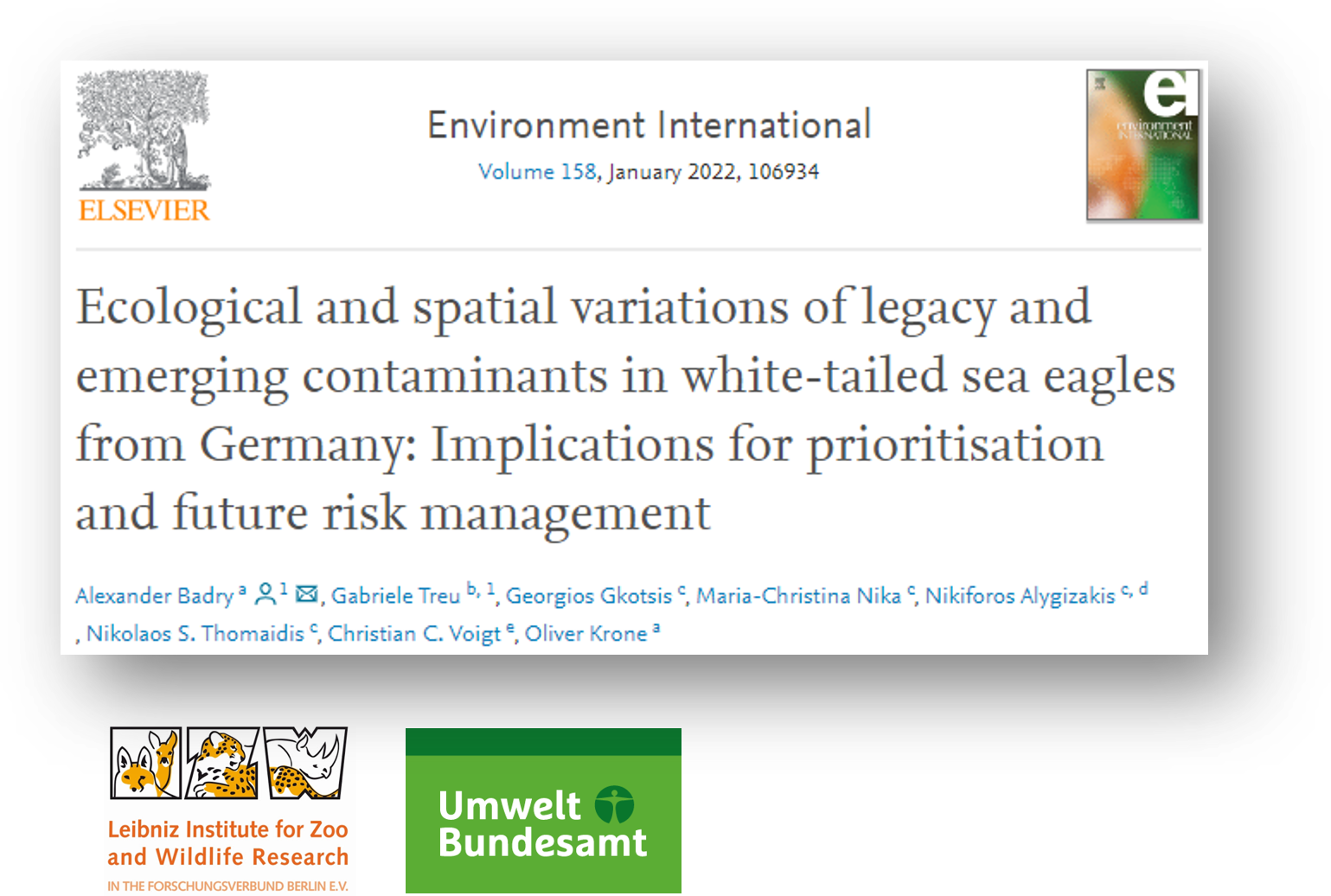
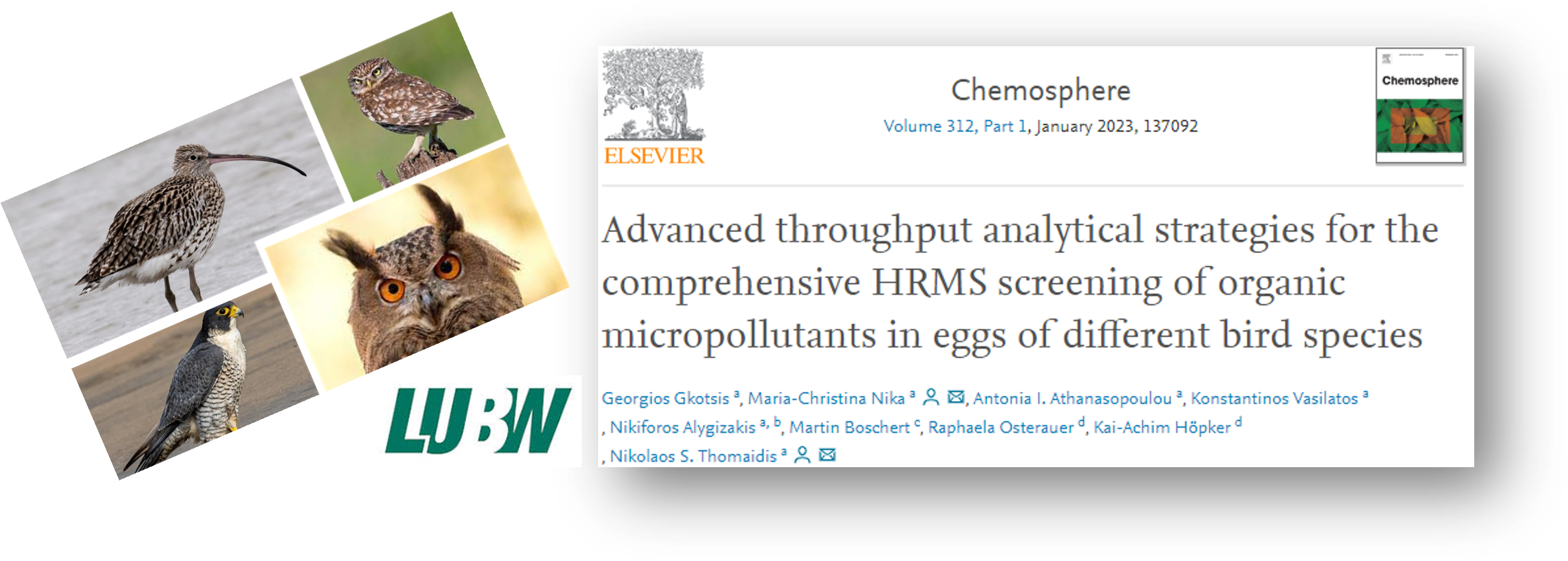
High resolution mass spectrometric suspect screening, wide-scope target analysis of emerging contaminants and determination of legacy pollutants in adult western black-tailed godwit Limosa limosa limosa in The Netherlands – a pilot study
Movalli et al., submitted to Chemosphere
This research has received funding from the European Union through the program LIFE17 ENV/SK/000355 “Systematic use of contaminant data from apex predators and their prey in chemicals management” and the implementation of selected project’s actionswas financially supported by the Green Fund.

